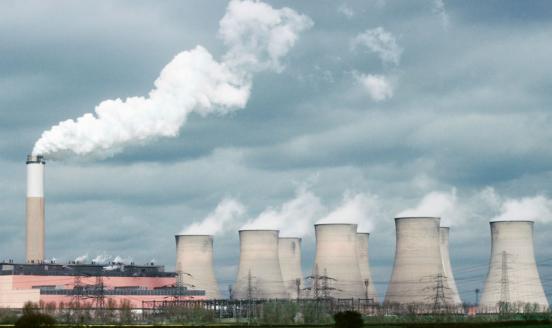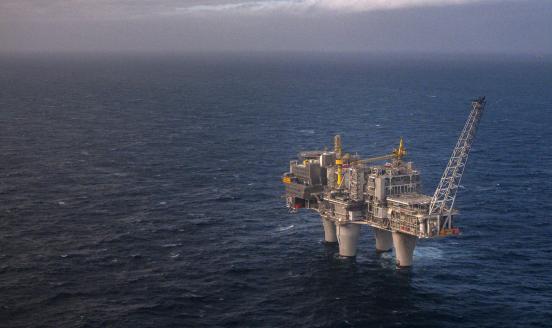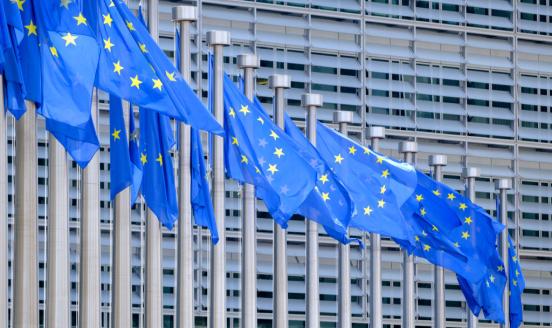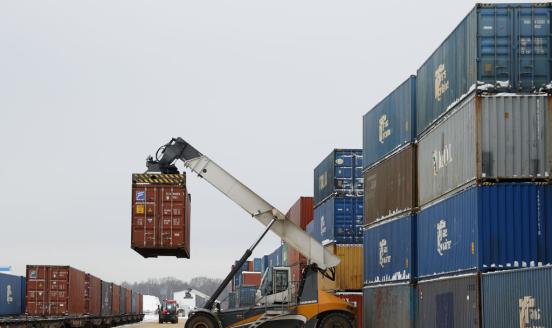Preparing for the first winter without Russian gas
The European Union can manage without Russian gas next winter, but must be united in taking difficult decisions.
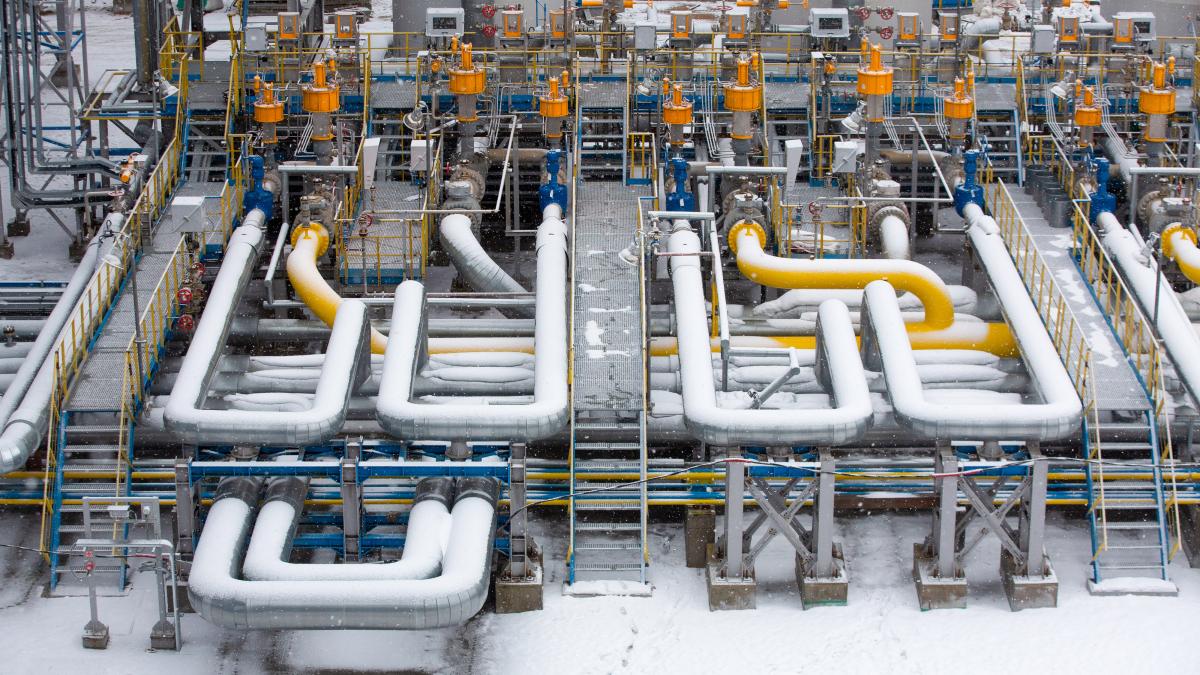
Please find our latest analysis here.
After a turbulent winter that began with very low gas storage levels and has continued with historically low supplies from Russia, the European Union will make it through until the summer on the back of record-high LNG imports. The urgent question is what comes next? How can the EU better prepare for next winter in the wake of Russia’s invasion of Ukraine? Preparations must be made for a complete termination of all Russian gas flows to Europe.
The immediate challenge is to refill storages as much as possible before next winter. A previous Bruegel blog explored three scenarios to see whether Europe could survive this winter without Russian gas. This blog post updates this analysis to consider the coming year and outlines three scenarios in more detail.
All scenarios begin with 320 TWh of EU-wide storage on 1 March 2022. A monthly demand is set according to the average across 2018-2021 (440 TWh/month in March 2022 to 240 TWh/month in summer months). We choose this assumption to allow calculation of the necessary demand reduction to compensate for import shortfalls. We assume that imports from North Africa, Norway and Azerbaijan remain at similar levels to the last few months, at their maximum capacity (in total 120 TWh/month). For LNG, we assume record import levels, approaching the technical maximum capacity of regasification terminals (140 TWh/month). Russian imports are considered as follows:
- No Russian imports: Even record high non-Russian imports would not be enough to sufficiently refill storage ahead of next winter. Europe would need to reduce demand by at minimum 400 TWh (or 10%-15% of annual demand). This is possible. A portfolio of exceptional options could abate at least 800 TWh.
- Limited Russian imports: The Nord Stream 1 and Turkstream pipelines would operate (60 TWh/month), while Ukraine transit, Yamal and flows to the Balkans are stopped. Gazprom would earn a lot of money from high prices and maintain control over the EU’s gas supply, while Europe would still suffer from a highly volatile gas market.
- Average Russian imports: Russian exports to the EU market closely resemble 2021, which we consider roughly equal to Gazprom’s long-term contractual obligations. Without energy sanctions from either side, this is likely to be the prevailing scenario. It would allow storages to be easily replenished and lead to lower prices.
The margin for the EU to reduce Russian gas dependency strongly depends on demand. High prices, potential economic repercussions of Russia’s invasion of Ukraine and power-sector dynamics will reduce demand. The International Energy Agency already predicts lower gas demand than in 2021. More uncertainty comes from weather-related demand changes which alone can shift gas demand by 10-30%. If necessary, administrative measures (such as forced curtailment) can complement market driven demand measures. Accompanied by record-high LNG imports, demand side reactions (Figure 1, right) would suffice to immediately eradicate dependency on Russian gas.
Our high-level overview offers a rough sketch, but no simple answers. Most notably, scenarios assume that the EU can procure unprecedented amounts of LNG, that market players have sufficient incentives to purchase and store gas at high prices and that gas is then distributed seamlessly across countries. We explore each of these issues in more depth:
Availability of gas: the LNG market
Liquefied natural gas has grown to play an increasingly important role in the gas market. The figure below illustrates the LNG value chain – key to understanding limitations.

In 2021, worldwide LNG trade totalled 5,400 TWh, with China, Japan and South Korea as the world’s largest importers. Rising demand and tight supply resulted in a more than doubling of LNG prices from December 2020 to December 2021.
The main exporters are Australia, Qatar and the United States. In 2021, the US increased exports by 340 TWh (by far the biggest jump among exporters) and is expected to become the largest LNG producer by the end of this year. Non-US liquefaction utilisation in 2021 ranged between 75% and 85%, leaving some margin for additional production. In 2022 global production is forecasted to increase between 63 and 300 TWh (1.2 to 5.5%) from 2021..
There are over 600 dedicated LNG vessels which transport gas around the world. In 2022, the IEA expects spot charter rates to decline by 10% below the 2021 average as 50 new LNG carriers were put into service in 2021 and 30 more are expected in 2022. LNG vessels do not appear to be a limiting factor.
Europe has been a prominent beneficiary of the increasing role played by the United States in the LNG market, receiving 23% of total US LNG exports, with volumes passing from virtually zero in 2016 to 232 TWh in 2021. This trend was further accelerated in January 2022, when the EU received 37% of total US exports for the month (corresponding to 44% of EU’s LNG imports).
Figure 2: European LNG imports by source in TWh
Source: Eurostat.
Turning to regasification, in the EU the utilisation rate has ranged between 30% and 70% of total capacity over the past four months, leaving space for more intensive use of the current sites. Over the next years, multiple projects for further expansion are expected to come online providing increased capacity.
Beyond physical constraints, the contractual structure of the global LNG market also limits the possibility of re-directing volumes to Europe. The LNG business has developed based on long-term contracts of 20-25 years, which are necessary for both sellers and buyers to justify the significant investments required for the construction of liquefaction plants and receiving terminals.
There is no global standard for such contracts and LNG sellers and buyers can agree on very different conditions on issues such as contract duration, volume, pricing formula, take-or-pay commitment and destination flexibility. LNG contracts are today more flexible than in the past and as such they can provide important short-term flexibility to international gas markets.
This flexibility is provided by two elements. First, the number of contracts with flexible destination clauses has grown from an average of 34% in 2015-2017 to an average of 64% in 2018-2020, driven by US LNG projects coming online. Second, an increasing share of LNG contracts has been signed by portfolio players – ie energy companies that procure a mix of LNG supplies from various origins and resell to customers according to their requirements via term and spot contracts, among which European majors feature prominently.
These sources of flexibility underpin Europe’s current capacity – due to its higher prices – to attract US LNG cargos otherwise destined for Asia, to compensate for lower Russian gas supplies. They also provide grounds for the high-level political requests advanced by both the European Commission and US administration to large Asian LNG consumers such as Japan and South Korea to divert cargos to Europe, in view of helping the ally deal with its gas crunch – similar to how Europe and the US helped Japan with LNG supply after the 2011 Fukushima accident.
The key question is at what scale and for how long could this flexibility be used, considering the rising demand in Asian countries for LNG.
Storing up: who pays for the gas?
Injecting around 700 TWh into EU storages ahead of next winter will be a costly exercise. At current prices this would cost at least €70 billion, compared to €12 billion in previous years.
So, Europe will not only have to find somebody to sell this gas, but also someone willing and able to buy it. Typically, this would be the business of European gas companies. But private companies are profit-maximising and risk-adverse. Buying at record prices in a market environment in which geopolitical decisions and the strategic behaviour of a pivotal supplier can drastically change the demand-supply balance is a bet with limited upside and massive downsides (see Figure 5). Just imagine what would happen if by the summer, EU gas companies managed to amass close to 1000 TWh and Gazprom suddenly decides it is time to release the volumes it withheld last year. Prices would drop dramatically, leaving all those who stored gas – helping Europe prepare for winter – with huge losses. This is a catch-22 scenario. If companies do not increase storage, Gazprom might continue keeping the market very tight, leading companies to lose lots of money by not being able to supply their customers. However, if the same companies store lots of gas, Gazprom will be tempted to flood the market.
One way of addressing this in the short-term can be storage obligations (even though adding other flexibility options such as LNG and interruptible contracts might reduce cost). This might help coordinate companies, especially if cost can be passed on to final consumers. But this only works well if it is organised at the European level, otherwise EU countries might outbid each other to refill their storages amid limited supplies.
Another element would be risk-sharing between gas companies and governments, so that companies do not bear the full policy-driven volatility of gas prices when storing gas. In an exceptional situation it might be conceivable to move to coordinated government procurement of gas for storage.
Regional impacts
European countries will be affected differently by a loss of Russian gas. Some direct neighbours that are not connected to the EU grid (Finland and the Baltic countries) consume relatively little gas and have their own energy security provisions including the LNG Terminal in Klapeida (LT) and the Finnish ability to switch from gas to oil-use.
In the interconnected European gas system, exposure to Russian gas can be measured very differently. Commercial contracts, for example, see substantial exposure in Western Europe: Gazprom reports sales of more than 120 TWh to France in 2021. On the other hand, simply assuming that inflows of gas are depleted like dominos along the delivery pipeline (SK 100% -> CZ: 100% -> AT: 100%) cannot consistently depict the complexity of bilateral flows in a relatively competitive market. Hence, we attribute the exposure of each country to individual gas sources by accounting for the full matrix of cross-border-flows in the EU in 2021 (see Annex and Figure 6). This simplifies each country into one big pool of gas and provides a good indication of how strongly each country would be affected by a shortfall in Russian gas, if gas flows continued proportionately to 2021. Accordingly, Belgium, France and the Netherlands obtain very little Russian gas, while Germany obtains more than half its gas from Russia and most eastern European countries – with the exception of Romania and Ukraine, which have substantial own production, are highly dependent on Russian gas.
Diving down into the individual pipeline routes from Russia, it becomes clear that Nord Stream 1 is crucial for central Europe, while the transit through Ukraine is important for the countries in the Balkans and also Italy.
This implies, first, an infrastructure question. Would it be technically possible to bring gas into countries that are currently primarily supplied by Russian gas? This is difficult to answer as the European Network of Transmission System Operators for Gas (ENTSOG) does not account for a complete stop in Russian gas in their annual security of supply modelling. This needs to happen quickly and corresponding technical bottlenecks need to be identified.
The second question is how to distribute the gas gap between EU countries and consumers. In ‘normal’ times, markets would perform this rationing in the most efficient way. But in a situation with very steep demand curves, strong political preferences for individual users and almost completely inelastic supply curves, these risks result in a process in which governments outbid each other in subsidies for their consumers. Such a subsidy bidding war would lead to higher prices for everyone, making external suppliers richer without enabling significantly higher imports.
Conclusion and policy options
The crisis-scenario discussed above will require improvisation and entrepreneurial spirit. The main message is: if the EU is forced or willing to bear the cost, it should be possible to replace Russian gas already for next winter without economic activity being devastated, people freezing, or electricity supply being disrupted. But on the ground, dozens of regulations will have to be revised, usual procedures and operations revisited, a lot of money quickly spent and hard decisions taken. In many cases time will be too short for perfect answers.
Ensuring that as much gas as possible is brought to the EU and fairly distributed across country storages is crucial to reducing the EU’s vulnerability to a prolonged escalation. This poses three challenges: 1) Getting as much gas as possible to Europe and not drastically overpaying for it; 2) Distributing the gas in Europe and; 3) Distributing the cost of this operation. This momentous challenge is made even more difficult by the uncertainty about which scenario Europe will find itself in, as well as the fact that Europe plans to drastically reduce gas imports in the next decades. Hence, there would be substantial risk for Europe if it would blindly go all-in, signing every gas contract available.
Public intervention will be necessary to ensure sufficient imports over the next few months. This may take the form of a task force to coordinate purchases and prevent companies outbidding each other. Policymakers should support activation of potential supplies and offer political bargains to secure additional LNG volumes. Private companies are likely to hold back from buying gas at the current high prices that they might only sell with a substantial loss if Russia floods the market. Hence, the EU should provide companies that store gas, especially in the most vulnerable EU countries, financial insurance against such a scenario. One might conceive contracts for difference, which pay companies back the difference in case prices end up below €70/MWh next winter.
These efforts are necessary but not sufficient. Over the next 12 months, there is little that can be done to remove hard physical bottlenecks. Without Russian gas, there will remain a gap between supplies and a ‘normal’ year’s demand. Exceptional measures are possible to reduce demand. They would send a signal of united European defiance and stop billions of euros currently flowing from west to east.
Recommended citation:
McWilliams, B., Sgaravatti, G., Tagliapietra, S. and G. Zachmann (2022) ‘Preparing for the first winter without Russian gas’, Bruegel Blog, 28 February
Annex: Leontief Methodology for Map
The European gas market is complex and heavily interconnected. Foreign gas enters the market through pipelines or LNG terminals. This gas then continues its journey through European pipelines, often crossing multiple international borders, before being dispersed into city centres and industrial clusters. Typical trade statistics do not capture internal EU countries’ reliance on foreign gas well, instead showing imports from neighbouring countries. For example, trade statistics show Austria importing huge volumes of gas from Slovakia, yet Slovakia does not produce this gas but rather transits it from Russia.
Therefore, one must think beyond traditional statistics to understand the full picture. To do this, we apply Wassily Leontief’s Nobel Prize winning input-output matrix to the gas market. The calculations consider all flows of gas both into and subsequently within the European market. By considering all flows, we are able to accounting-wise attribute shares of gas dependency to each country. One can consider the analogy of releasing coloured-dye in several different reservoirs at the top of a mountain. Over the year, these reservoirs gradually empty via different streams into multiple ponds down the mountain, occasionally crossing each other’s paths. The water in every pond consists of the specific flows of different reservoirs to that point. It is important to note that our numbers do not infer the physical composition of every gas molecule’s origin but reflect averages.
To carry out the calculations we extracted data from the ENTSOG transparency platform. We queried all points both within and entering the EU’s gas market. Manual validation was necessary to remove redundant points. We deleted points for the following reasons: duplication of direction (ie, when both imports and exports of the same gas are reported), duplicates by operator (ie, where the same gas is reported by multiple operators and aggregators) and flows of gas within the same country were dropped.
Our reporting can be understood as individual countries exposure to gas from different sources. Were gas from any source slowed down, then economic and political decision-making would determine whether replacement gas is sent, or how the shortfall is compensated.
We specifically treat Russian gas passing through Ukraine as transit-only, meaning it does not enter the Ukrainian gas mix. In 2021, Ukraine met large shares of demand through drawing on storage, which we account as Russian gas. In other years, they would have imported this gas back from Europe (implying it to be Russian).
